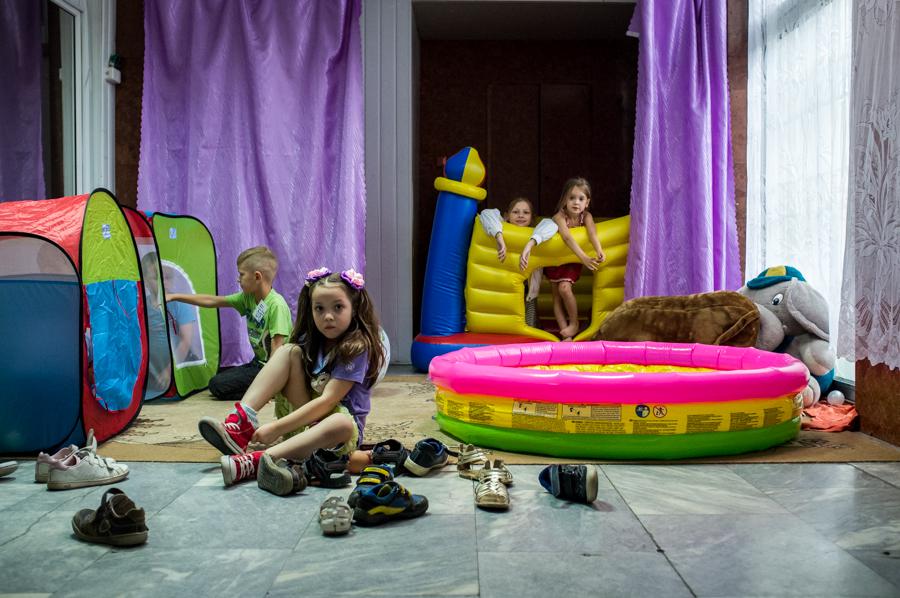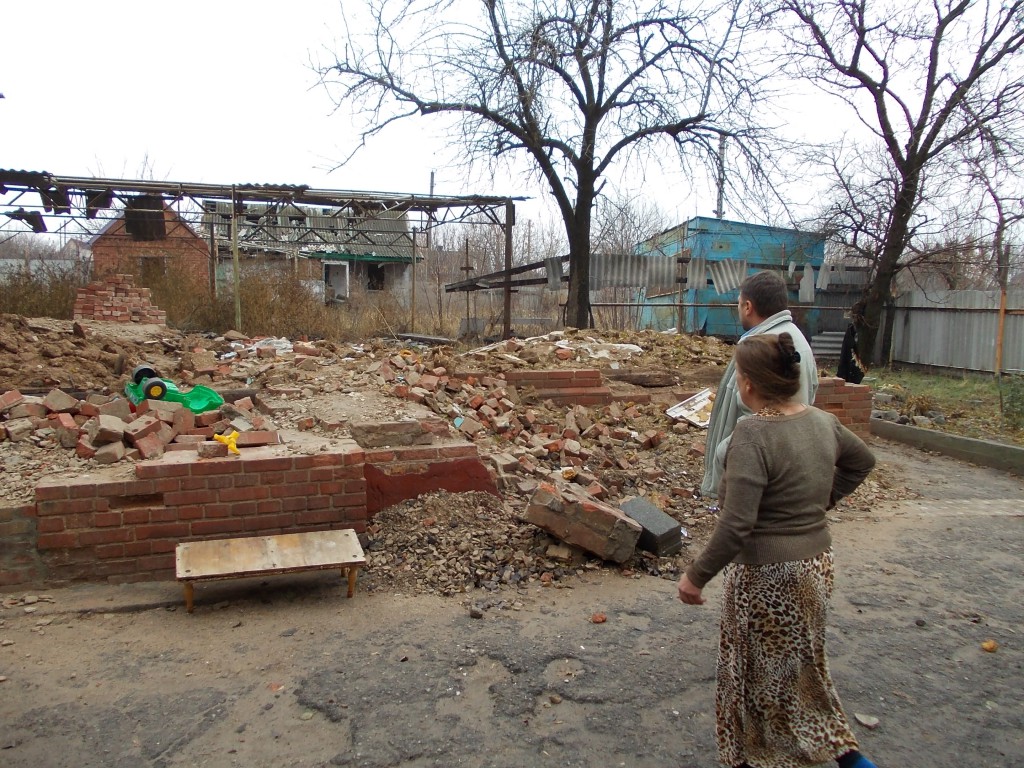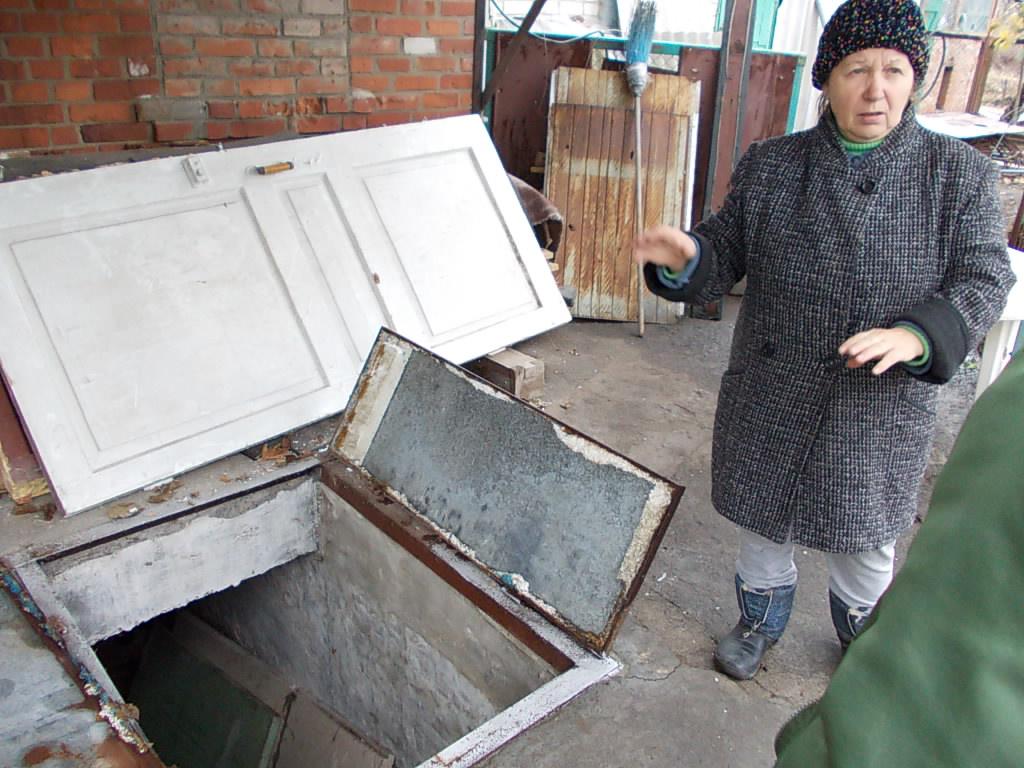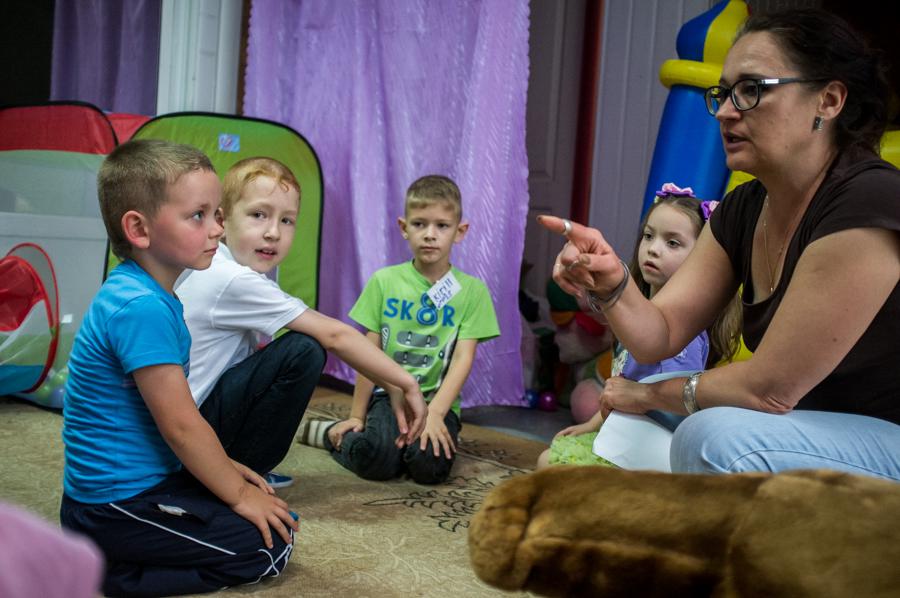
“I fled Donbass with my son almost two years ago, but I still consider it was a miracle. We literally caught the last train,” Anna, a young Ukrainian woman who fled the armed conflict in Ukraine, told me in April 2016, when I visited a Center for internally displaced persons (IDPs) in Kiev. The Center is currently helping several thousands of displaced people who have fled the conflict in the east of the country and moved to the capital. Many of them have been injured, traumatised, and left without basic living supplies.
“Unfortunately, my parents were unable to flee with us,” Anna continues, explaining that it is unlikely that her parents will ever be able to leave the war zone. “A year ago, my father was walking our dog, when he stepped on a mine – he was injured and he lost one leg.”
As Anna tells me her story, the only person not crying is her 4-year old son, playing nearby. Most internally displaced adults try to protect their children from the enormous trauma that they have had to undergo.

Anna’s story is tragic, but it is just one among many tragic stories that I have heard while visiting communities of internally displaced persons (IDPs) and IDP centres in Ukraine. The war in the Donbass has triggered a massive hidden displacement across the country, with the numbers approaching 1.76 million internally displaced persons at the beginning of 2016. According to the non-governmental organisation The Adventist Development and Relief Agency (ADRA), there are 3.1 million people in need, making the conflict the 10th biggest humanitarian crisis in the world. About 150 national and international humanitarian organisations are currently helping those in need, but these organisations have the collective capacity to help only about 2.5 million of the most vulnerable displaced persons, many of whom are single mothers and their children.
As in every war, families have been divided, often leaving solo women and children at risk. Some decided to run a number of life-threatening risks and travel thousands of kilometres to reach other, safer regions. But a huge number of elderly, injured or otherwise vulnerable people had no resources to run away and start a new life, and many have stayed in the East, including the so-called “No Man’s Land” zones.

Humanitarian workers are trying to help internally displaced persons suffering from post-traumatic stress disorder and other difficulties related to post-traumatic stress. According to ADRA employees, many women and children in the conflict zones have witnessed violent war events and some have even had to collect the human remains of their relatives. Others (particularly the elderly) were not able to survive the harsh winters without food and heating. In this harsh context, many incidents of violence against women and girls have been documented. As Larisa Kobzarenko, the project manager for ADRA Ukraine, emphasizes: “In times of war, a violent incident is the easiest thing that can happen to you, and this topic needs to be raised.”
Lena, another young internally displaced person with two children, aged 4 and 10, explained to me that she ran away without her husband, who had to stay in the East, and ended up living alone with her children in a one-bedroom flat in the west of the country.

“Before the conflict, we were a young family, we had managed to buy a house, refurbish and decorate it. But we barely had time to enjoy our new home: when my son was two years old, the war broke out and we lost everything, including the things that we bought and had never used. But, in times of war, you reconsider everything: the most important thing now is that we are still alive, even though my husband had to stay in the East of the country.”
It is hard to imagine the extent of the trauma suffered by these millions of people affected by war. As Larisa Kobzarenko says: “A year ago, everyone was talking about distribution programmes, providing food, vouchers and house repairs as an urgent response. But now we have also started talking about recovery activities. And this is the next wave of humanitarian aid that we need to provide.”













